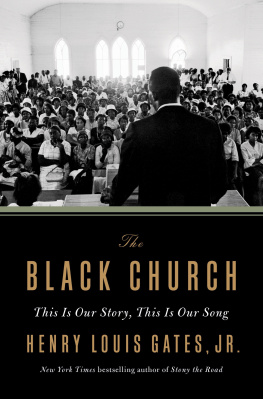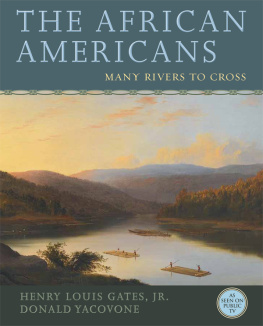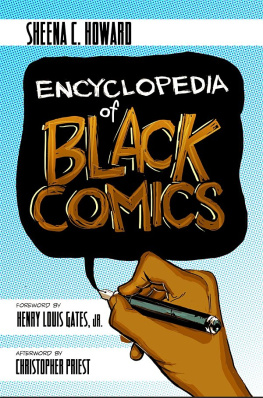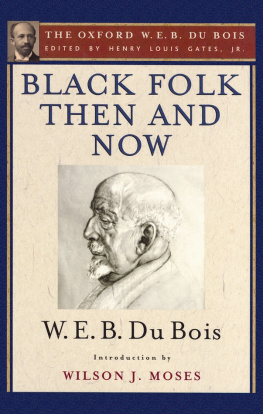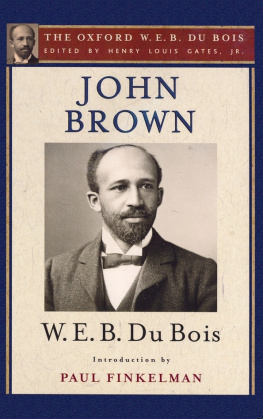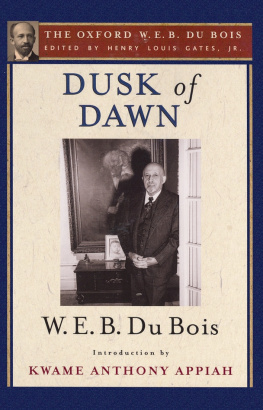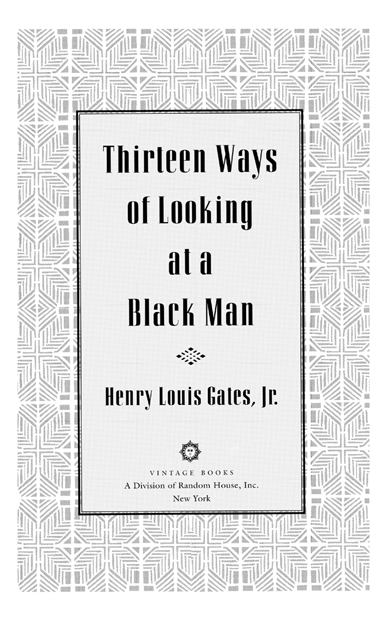Henry Louis Gates, Jr.
Thirteen Ways of Looking
at a Black Man
Henry Louis Gates, Jr., is the W. E. B. Du Bois Professor of Humanities and chair of the Department of Afro-American Studies at Harvard University. He has been the editor of such collections as Reading Black, Reading Feminist, and the Norton Anthology of African-American Literature, and the series editor of the complete works of Zora Neale Hurston, the forty-volume Schomberg Library of Nineteenth-Century Black Women Writers, and the thirty-volume African-American Women Writers 19101940. He is the author of The Signifying Monkey, which received the American Book Award, Figures in Black, and Colored People, a memoir, among other books. A staff writer for The New Yorker, he lives in Massachusetts.
Also by Henry Louis Gates, Jr.
The Future of the Race, with Cornel West
Identities, with Kwame Anthony Appiah
Colored People
Loose Canons
Figures in Black
The Signifying Monkey
Editor, The Dictionary of Global Culture,
with Kwame Anthony Appiah
General Editor, The Schomburg Library of
Nineteenth-Century Black Women Writers
(in forty volumes)
FIRST VINTAGE BOOKS EDITION, FEBRUARY 1998
Copyright 1997 Henry Louis Gates, Jr.
All rights reserved under International and Pan-American Copyright Conventions. Published in the United States by Vintage Books, a division of Random House, Inc., New York, and simultaneously in Canada by Random House of Canada Limited, Toronto. Originally published in hardcover in the United States by Random House, Inc., New York, in 1997.
All of the essays that appear in this work were originally published in The New Yorker, except for The Welcome Table, which was originally published as The Fire Last Time: What James Baldwin Can and Cant Teach America in The New Republic.
Grateful acknowledgment is made to the following
for permission to reprint previously published material:
Amiri Baraka: Three-line poem. Copyright Amiri Baraka. Reprinted by permission of Amiri Baraka.
Alfred A. Knopf, Inc.: Seven lines from Thirteen Ways of Looking at a Blackbird from Collected Poems by Wallace Stevens. Copyright 1923 and renewed 1951 by Wallace Stevens. Reprinted by permission of Alfred A. Knopf, Inc.
University Press of Virginia: Six lines from Omni-Albert Murray from The Venus Hottentot by Elizabeth Alexander. Copyright 1990 by the Rector and Visitors of the University of Virginia. Reprinted with permission of the University Press of Virginia.
The Library of Congress has cataloged the Random House edition as follows:
Gates, Henry Louis.
Thirteen ways of looking at a black man/Henry Louis Gates, Jr. 1st ed.
p. cm.
eISBN: 978-0-307-76565-9
1. Afro-American men. I. Title.
E185.86.G375 1997
920.7108996073dc20 96-33138
Random House Web address: http://www.randomhouse.com/
v3.1
For Henry Rosovsky
When the blackbird flew out of sight,
It marked the edge
Of one of many circles.
Wallace Stevens,
from Thirteen Ways of Looking at a Blackbird
Contents
Thirteen Ways of Looking at a Black Man
[The Simpson Trial]
Introduction: Ways of Looking
.
Liggetts Drug Store was at the epicenter of the cultural revolution that overtook New Haven in 1969. It was situated at the north corner of Yales campus, where, at a rotary, five streets met helter-skelter, despite a full battery of traffic lights and pedestrian islands. Like a fortress, it seemed to hold at bay the chaos that lay just a block or so up Dixwell, where the ghetto began. In one direction lay Yale University and all that we black students so ardently (and so guiltily) sought to become. In the other direction lay Dixwell Avenue and all that we sought to flee. Liggetts corner was seized by black revolutionaries of every kind, who recognized it as prime real estate for hawking their wares. As a result, making your way to Liggettswhich was as big as a Wal-Mart todayinvolved what we called running the gauntlet, at least if you were black.
You might think you needed to pick up a roll of film, some Gummi Bears, a jar of Afro-Sheen, a prescription of penicillin. But they knew what really ailed you, and had their prescriptions at the ready: there was much wisdom about offing the pigs, freeing your mind, and liberating our people. And they really did have something on the ball, to have planted themselves so strategically at points along the route that connected New Havens largest drugstore with its best record shop, Cutlers, twenty yards farther down the street, and, another twenty yards along, the Yale Co-op.
Already got it, my brother, I soon learned to say to the clean-shaven, close-cropped Black Muslim pushing Muhammad Speaks. To avoid his amused eyes, Id stare at his bow tie and try to determine if it was a clip-on or if he and his co-religionists were taught to knot their ties by hand, perhaps (as I liked to imagine) in special classes. If you thought ahead, you could start the days shopping down at the Coop, working backwards up the street toward campus, and slip by the Muslim as he worked the new arrivals heading in the opposite direction. But the Panthers were parked squarely in front of Cutlers Record Shop and there was no way to avoid them. Since they knew you were headed to buy the latest Coltrane album, you couldnt deny that you had any money. Then, too, the Panthers had a secret weapon for arresting your gaze, making you pause just a moment too long to be able to avoid an exchange: they were, you see, the fashion plates of black insurrection. They had the kind of long black leather coat that is now sold by J. Peterman, which they wore with matching pants and gleaming black boots; and their jaunty black berets were pushed down so that their carefully coifed Afros would poke out just over the ears. If the Muslim brother, with his starched white shirt and dark suit, looked like the local colored undertaker, the Panthers were, in their aggressively haute couture way, the revolution made visible, right down to the ankle length of their leather overcoats.
Todays Pig is tomorrows pork chop! they would shout. You handed them money because they were working for a better tomorrow; because they were strong, proud, and black; because they had a wardrobe you could only dream about; because if you dared to walk past them, theyd demand, Where you gonna be when the revolution comes, handkerchief-head? and images of the tumbrel would pass before your eyes. Power to the People, youd murmur sympathetically, and then both of you, almost in unison: Right On. Assume the position: right fist clenched, swinging deliberately toward the heart.
You handed them money because there was a revolution going on, and you were preoccupied with next weeks exam in cell biology. True, the unit on Blackness wasnt going to be on the final; but you still were responsible for it, responsible in a big way. Were we going to sell out or keep the faith? Were we being trained to be race men, like Thurgood Marshall, or soul-less, colorless opportunists whose success would be engineered by racists who wanted to use it as a bludgeon against our disadvantaged brethren:


